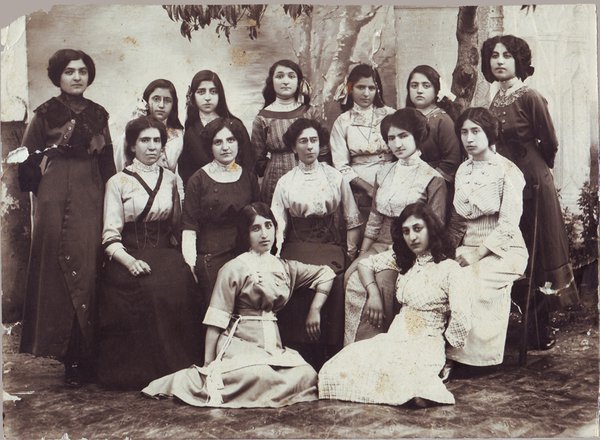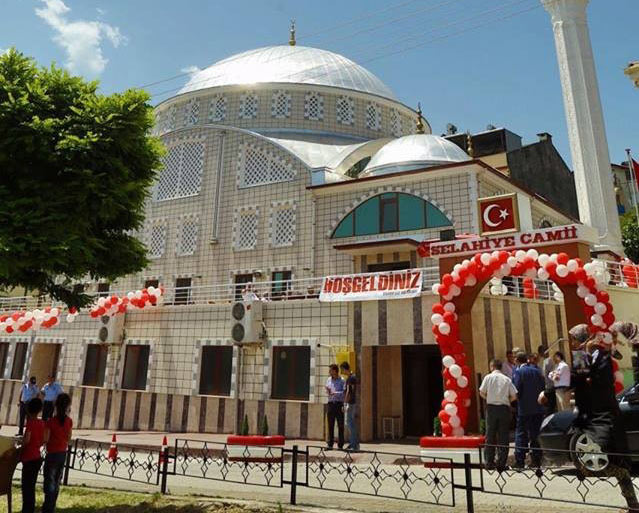Special for the Armenian Weekly
In a short TV report, the local “Samsun Haber TV” station (samsunhaber.tc) recently covered the Armenian past of the Selahiye neighborhood in the northern Turkish city of Samsun.
In the report, Emin Kirbiyik, the head of the Samsun Local History Community, said that the 30 August Islamic Imam-Hatip Middle School, which offers an Islamic curriculum to pupils, and the Selahiye mosque in the neighborhood, were built on the property that housed an Armenian church before 1915. The church Kirbiyik refers to is the Surp Nigogayos Armenian Apostolic Church.
Also, the Gazi Pasa (Ghazi Pasha) Primary School near the 30 August Imam Hatip Middle School served as the home of the church’s Armenian priest and as an Armenian orphanage, said Kirbiyik. Some houses in the area still carry traces of Armenian architecture.
The church was destroyed in 1936 and replaced by the 30 August Primary School. The official website of the school also confirms the TV report:
“The construction of the 30 August Primary School was begun in 1936 and completed in 1938. The building was built on the foundation of the Armenian Church, which was destroyed.”
According to the website of Gazi Pasa Primary School:
“There used to be a church where the 30 August Primary School is today. And the Gazi Pasa Primary School was the guesthouse of the priest of the church. This school was once used as ‘Darul Eytam’ [orphanage] by Armenians back in those days. The decision to use this building as a school was made by Kazim Pasha, the governor of the city. In 1930, it was opened as an official primary school.”
Today, Samsun does not have an Armenian community, but the Selahiye neighborhood, as well as the rest of Samsun, was home to many Armenians before the Armenian Genocide.
According to the statistics of the Patriarchate and the Ottoman population census of 1914, there were 35,907 Armenians in Samsun (Canik). There were also 49 churches and 74 schools. The Armenian community also greatly contributed to the culture of the city. Tomas Fasulyeciyan, one of the founders of Ottoman theater, for example, established the first theater in Samsun in 1890’s.
Professor Raymond Kevorkian describes the extermination process of Armenian communities from Samsun in his book The Armenian Genocide: A Complete History.
Armenian, Greek, and Assyrian Roots of Samsun
Samsun is located in northeastern Anatolia, or the ancient Pontos region.
Samsun, like other ancient Pontian cities, was established by Greeks from Miletus in about the 7th century B.C. Many famous churches, monasteries and schools are testaments to the resilience of Hellenism and Christianity in the region. Pontos gave the world many great thinkers, such as the philosopher Diogenes of Sinope (Sinop) and the geographer Strabo of Amasia (Amasya).
Assyrians too are deeply rooted in the region. According to the International Standard Bible Encyclopedia, edited by Geoffrey W. Bromiley, in Pontos, “There are traces of Assyrian culture from the third millennium B.C.”
The history of Samsun is also closely linked with Armenia and Armenian highlands. Under Byzantine rule, Samsun was a part of the administrative region of Armenia.

Samsun, 1912. Female pupils and teachers of the Armenian school. The identity of only one is known; Youliane Sarkissian (seated on right) (Photo: Norayr Dadourian collection, Los Angeles/Houshamadyan)
According to “Armenian Pontus: The Trebizond-Black Sea Communities,” edited by Professor Richard G. Hovannisian, “There were Armenian communities in the Pontus-Black Sea region across the centuries until their violent elimination in the first decades of the twentieth century.”
The book is an invaluable source for those who want to discover the Armenian roots of northern Turkey.
Today, Samsun is an all-Muslim, Turkish city. The indigenous Greek, Armenian, and Assyrian communities have been exterminated. This change in demographics and culture was accomplished through mass murder, forced deportations, forced conversions to Islam, and forced seizures of the property by the perpetrators.
It has been 102 years since the Armenian Genocide, but the Turkish government is still in proud denial. How long will it take Turkey to finally stop denying the destruction and the infinite suffering brought to the victims of the Armenian Genocide as well as all other natives of Turkey?
Source: Armenian Weekly
Link: A Mosque and an Islamic School Now Stand in the Place of the Armenian Church of Samsun


